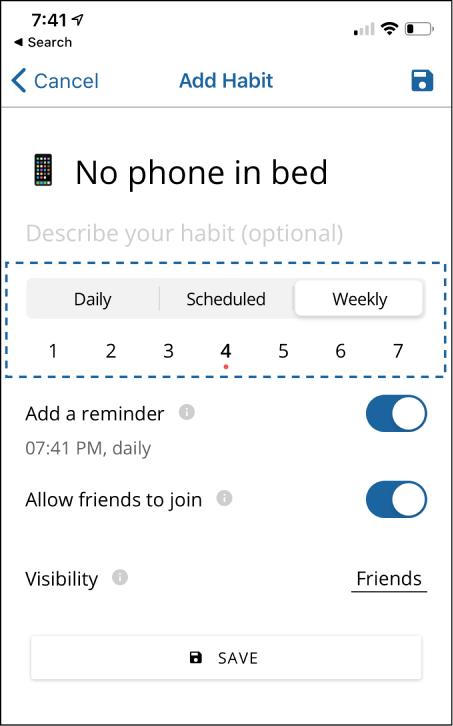If you aren't solving a deep user problem, good luck getting attention.
3 months ago, we set a target of 1000 DAU by August 1. A big target, but we were confident–as we had the two core ingredients to growth:
- A clear product pitch:"yet another habit app... but free AND with group functionality"
- Growth expertise1 (endnote noted)
But after 4 months of burning the midnight oil, we missed our target of 1000 daily users... by > 5X.
Some users do use & promote the app because it's free and has "cool group linking". And our App Store rating is a 4.8, with over 130 combined ratings. But altogether that love amounts to ... ~5 new user signups/daily... and < 200 people using (if you are one of them, we really do appreciate it!).
Famous growth successes (AirBnB + Craigslist, Dropbox referrals) are well documented, but the stories of the failed experiments along the way are not. Here's a short list we've tried of things that have not driven any meaningful growth:
- Launching our users' most requested feature
- "Successful" Product Hunt launch (240 upvotes)
- Making the UI ~2X better
- .. and fixing many broken buttons
What users wanted...
As any diligent PM would, I reached out to our users for interviews (note: if getting users to interview is hard, maybe that's a bad sign). Across 15 interviews, the problem most consistently mentioned was the inability to set weekly goals eg. "Work out 4X per week". Other habit apps had the feature, and it aligned with our intuition. So we built it 🎉.

The results...
- Practically no one uses it. Less than 4% of habits created use our "most requested feature"
- Retention did not change, and in fact, got worse, after launching this
So in summary, we asked a set of users about their biggest problems — built an MVP of that feature — and saw no usage change according to any meaningful metric.
Why did it have no impact?
Even if our users "wanted" the per week feature... I don't believe that was stopping them from evangelizing the product. Like all things, I suspect it just goes back to the fact we are not solving a real user problem. At the core, habits are hard to build. There are a lot of habit apps in the app store... and for most people, habit tracking + doing habits with friends is not a natural behavior.
There are some people we are solving a problem for (we have a few families and friend groups who use religiously), but we don't how many of these people even exist, and how to best reach them.
What's next? Two paths...
- Solve a more immediate problem for people
- Learn more about the users we are solving a problem for, and develop a scalable growth strategy to target them.
For 1, we are actively running experiments. We are partnering with creators to add "challenges" with content to the product. This solves two different user problems - I want to do X ("I want to improve my back", "I want to learn about social justice") as well as I want to engage with this creator. Second, we are testing public habits, to see if people want random accountability buddies (I'm very skeptical). For 2, we are interviewing existing users to inform specific strategies.
It is too easy to go heads-down and convince yourself that simply one more feature will change the outcome. To mitigate that, we should have had regular check-ins to step back and question our core hypothesis. The fact that our first 20 users only added .5 friends should have raised a red flag that we had not found a real problem–or at least a set of users that had that problem. Wish us luck as we keep exploring, and let me know if you have any questions ([email protected]).
You can download the app on iOS here and Android here.
1 I thought I understood how growth worked as a former growth PM at a large tech co. False. Growth at "large tech co" is very different from growth at small consumer startup.
